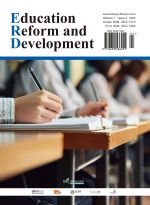Abstract
With the rapid development of information technology, modern educational technology is playing an increasingly important role in improving teaching quality and optimizing teaching models. For university physics, a basic course for science and engineering majors, teaching effect directly affects students’ subsequent learning in professional courses. However, there are certain difficulties in the current university physics courses in teaching content, teaching methods, and the updating of teaching resources. It is urgently necessary to achieve innovation and transformation in the teaching model through the introduction of modern educational technology. This article explores the interactive docking mode between modern educational technology and university physics teaching, aiming to optimize the allocation of teaching resources, update teaching content, and innovate teaching methods by constructing the interactive docking links such as preview, course guidance, in-class teaching, after-class review, and testing, thereby improve students’ interest and effectiveness in learning.
References
Wang R, Feng F, Jin C, 2022, The Teaching Model and Practice of College Physics Experiment Based on CTCL. Journal of Science, Normal Universities, 42(12): 98–101.
Ding Y, Gao L, Cao H, et al., 2023, Research and Exploration of Teaching Reform Based on the Integration of OBE and PBL – A Case Study of General Physics Curriculum. Physics Bulletin, 2023(1): 2–6.
Liu Y, Gu J, Liang C, et al., 2022, Research on the Reform of College Physics Teaching in Architecture Universities Under the Background of New Engineering. University Physics, 2022(1): 56–60.
Shi Z, Zhang X, 2022, Integrating Information Technology to Improve Teaching Quality: A Case Study on the Deep Integration of Modern Educational Technology and High School Physics Teaching. Physics Bulletin, 2022(S01): 126–131.
Pu Y, 2022, Application of Blended Teaching Mode in the Construction of College Physics Experiment Course – Review of College Physics Experiment Course. Educational Theory and Practice, 2022(6): F0002.
Zhang L, Chen X, Gong W, 2023, Application of PBL Embedded Teaching Model in Public Basic Courses of Science and Engineering – A Case Study of College Physics Course. Physics Bulletin, 2023(1): 30–34.
Zhang W, Miao Y, Chen Z, 2021, Optical Experimental Simulation Based on Python and Its Application in Medical Physics Teaching. Modern Computer, 2021(10): 134–136.
Jiang T, Sun Y, Yu H, 2024, Application of Artificial Intelligence in College Physics Teaching. Innovative Education Research, 2024(5): 423–430.
Wang Q, Liu J, 2021, Challenges of Organic Integration of Artificial Intelligence and Subject Teaching – Taking Physics Augmented Reality App Teaching Application as an Example. Jiangsu Education, 2021(17): 19–24.
Lin X, Xie K, 2019, Current Situation of Artificial Intelligence and Rational Thinking on Its Educational Application. Modern Educational Technology, 2019(8): 12–17.
Ming S, Huang R, Zhong S, 2021, Methods and Strategies for the Effective Implementation of Students’ Autonomous Learning Process Under Artificial Intelligence: A Case Study of College Physics Teaching. Physics Bulletin, 2021(9): 4–8.
Zheng Y, Ren W, 2023, The Path Selection of ChatGPT Teaching Application from the Perspective of Practice. Modern Distance Education, 2023(2): 3–10.
Yu Y, 2023, Research on Physics Teaching in Senior High School Under Artificial Intelligence. Navigation of Arts and Sciences, 2023(23): 37–39.
Zheng Y, 2024, The Educational Implication of Artificial Intelligence – Based on the Perspective of Interdisciplinary Analysis. Modern Educational Science, 2024(1): 20–26.
Li S, Zheng L, 2024, Challenges and Responses of Generative Artificial Intelligence to Classroom Teaching. Curriculum. Textbook. Teaching Methods, 2024(1): 39–46.
